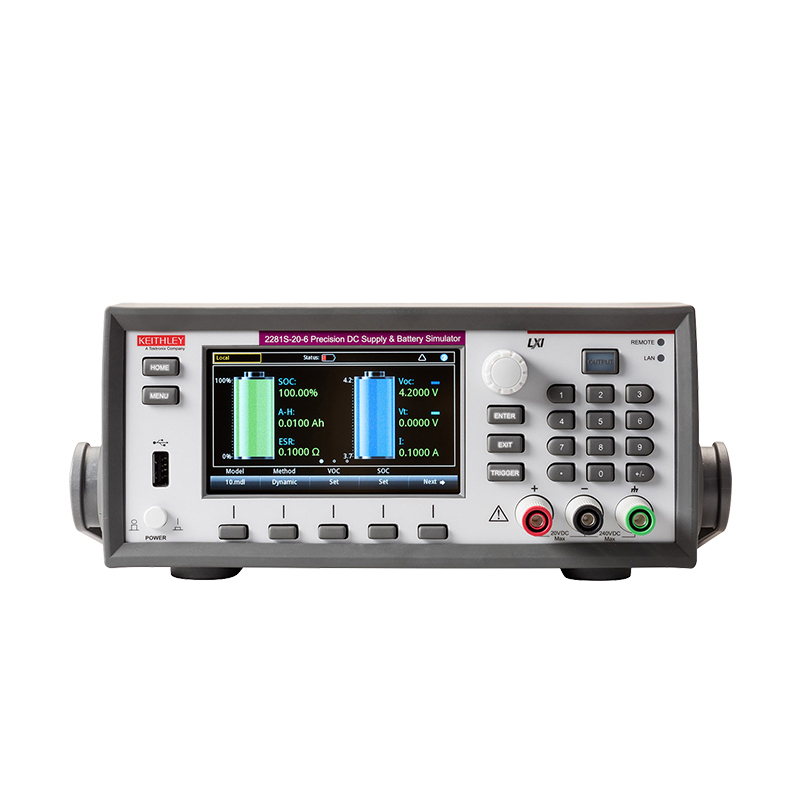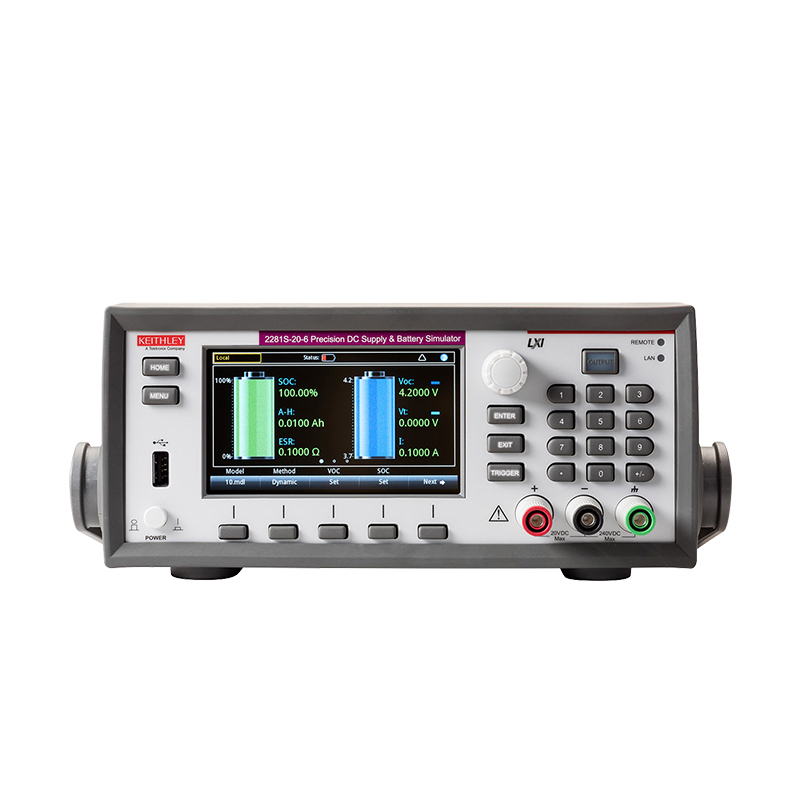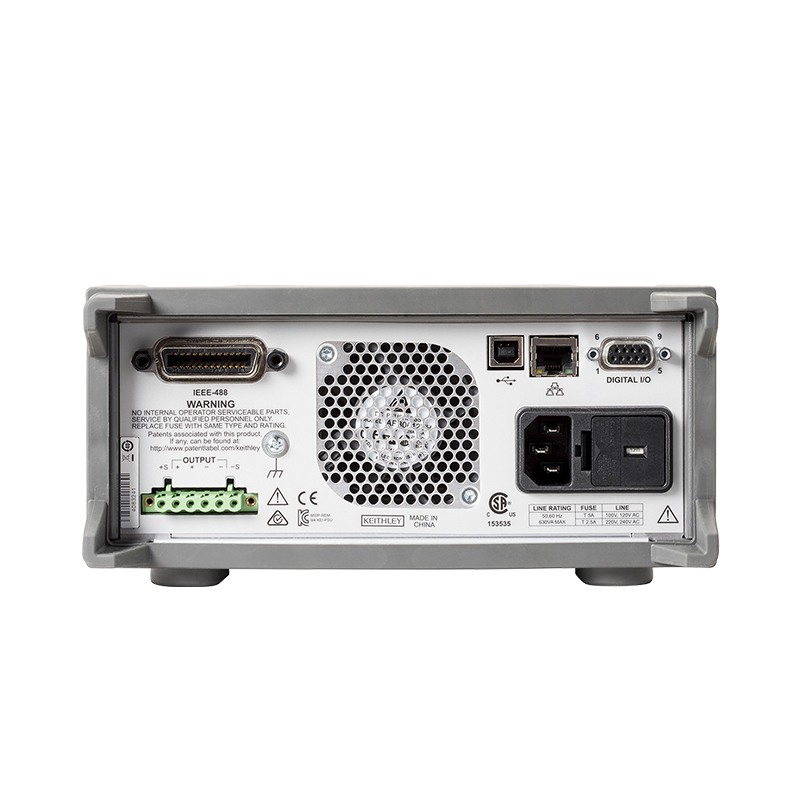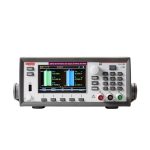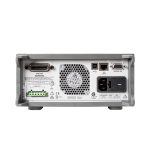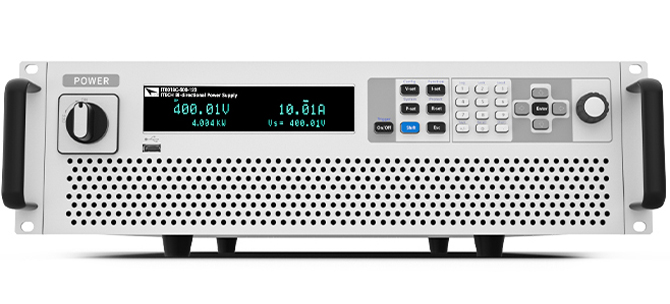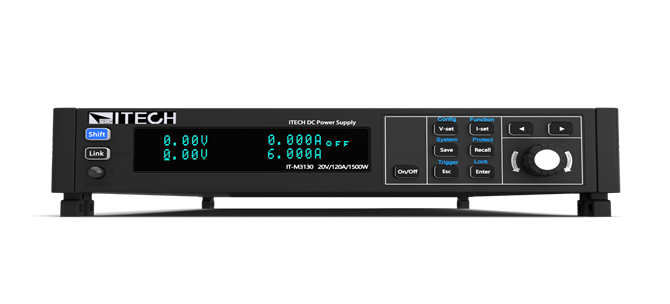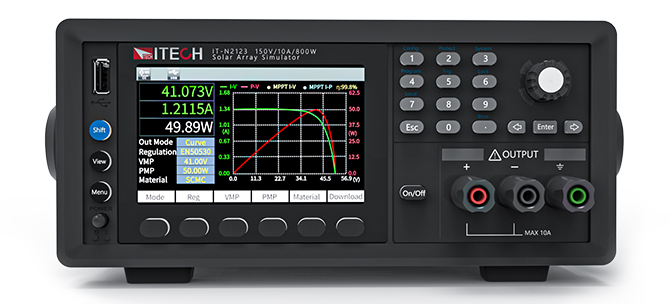Estimating product battery life
Use one of the models within the 2281S-20-6 to power your product to determine the runtime of the product.
specificities
- The 101-point model includes open-circuit voltage and internal resistance to present the charge state function
- Decide on the model to use based on the average current consumed by the product
- It has 5 built-in battery models available

Fast, repeatable testing in any battery discharge state
In any state of charge, such as near fully discharged, the battery simulator is programmed to understand product operation and battery shutdown voltage under low charge conditions.
specificities
- Programs the battery open-circuit voltage (VOC) and all other model parameters will be adjusted to the open-circuit voltage setting.
- or programmed state of charge (SOC) and all model parameters will be adjusted to the state of charge setting.

Unique graphical user interface continuously displays battery status
View key parameters of the battery model, including open circuit voltage, internal resistance, remaining charge, and state of charge.
specificities
- The right battery icon shows open circuit voltage, measured terminal voltage and load current
- The battery icon on the left side shows charge status, remaining ampere-hour capacity and internal resistance3

The Keithley Keithley 2281S simulates battery performance during a discharge cycle. It can reliably and repeatably test product performance in any battery discharge condition. The interactive graphical user interface provides a continuous display of battery status, and you can easily view key parameters of the battery model, including open-circuit voltage, equivalent series resistance, remaining charge, and state of charge.
How to simulate battery performance
The following are the steps for battery simulation using the Keithley 2281S:
- Connect the Keithley Keithley 2281S Battery Simulator to the product under test.
- Select the battery model that best matches the battery to be simulated. The Keithley Keithley 2281S has five built-in battery models and can also generate custom battery models by charging the built-in physical battery.
- The battery simulator can be set to any state of charge, such as near fully discharged, to understand how the product operates under low battery conditions and to determine the minimum operating voltage.
- Continuously monitor battery status and view key parameters of the battery model using the interactive graphical user interface.
Benefits of Battery Simulation
The benefits of battery simulation with the Keithley Keithley 2281S are numerous. By simulating the performance of a battery during a discharge cycle, you can estimate battery life and analyze product performance during battery operation. This allows you to quickly and accurately obtain the results you need for your tests. In addition, the Keithley Keithley 2281S is flexible and customizable, enabling you to create your own battery models based on actual batteries.
Select battery simulator for seamless testing and simulation
To efficiently test and accurately simulate battery-powered systems, choosing the right battery simulator is critical. Battery simulators replicate the behavior of real batteries, enabling developers to evaluate the performance and reliability of their devices under a variety of conditions. Whether you're developing electric vehicles, renewable energy systems, portable electronics, or other battery-powered applications, making an informed choice can streamline your testing process and improve product development efficiency.
Key considerations when selecting a battery simulator:
- Maximum voltage and current values
- Dynamic response and load transients
- Programmability and customization
- renewable capacity
- Voltage and current accuracy
- Compatibility and Integration
- security measure
- User interface and software
- Support and Documentation
Maximum voltage and current values
When selecting a battery simulator, it is important to consider whether the maximum voltage and current values match the application requirements. Battery simulators vary greatly in voltage and current ranges, so it is important to select a unit that matches the specifications of the system so that the behavior of the device can be accurately tested and realistically simulated.
Dynamic response and load transients
Battery-powered devices typically experience load dynamics that affect their performance. A high quality battery simulator should be able to provide excellent dynamic response to accurately simulate load transients. It needs to have certain characteristics, such as fast voltage and current change rates, to accurately simulate sudden load fluctuations.
Programmability and customization
Flexibility is key when testing a variety of battery-powered systems. By choosing a battery simulator that offers programmable and customizable options, you can simulate a wide range of battery chemistries, states of charge, and discharge profiles to meet the specific needs of your test scenarios.
renewable capacity
Renewable battery simulators are able to return energy to the grid instead of dissipating it as heat. This feature not only improves energy efficiency, but also reduces operating costs. When we value sustainable practices, choosing a renewable battery simulator can be beneficial.
Voltage and current accuracy
Accurate testing requires accurate simulation of battery behavior. Choosing an emulator with high voltage accuracy and current accuracy ensures that test results reflect real-world conditions. This accuracy is especially important when evaluating the efficiency and reliability of equipment.
Compatibility and Integration
Consider the compatibility of the battery simulator with existing test fixtures and equipment. Ensure that the dimensional specifications of the battery simulator match the configuration of the test space. Look for simulators that offer a variety of communication interfaces and protocols for seamless interaction with the test environment.
security measure
Safety is paramount when performing battery simulations, as mishandling can lead to dangerous situations. Ensure that the simulator has safety features such as overcurrent and overvoltage protection, thermal monitoring, and emergency shutdown functions. These features safeguard equipment, personnel and the environment.
User interface and software
A user-friendly interface and comprehensive software greatly enhance the usability of the battery simulator. Intuitive software allows you to configure, control and monitor the simulator efficiently. Look for simulators that offer a graphical user interface and remote control options for ease of use.
Support and Documentation
Reliable support and comprehensive documentation are important when purchasing a battery simulator. Check that the manufacturer provides thorough user manuals, application notes and prompt customer support. This ensures that you maximize the potential of the simulator and that any issues are resolved in a timely manner.
In summary, in order to select the right battery simulator, you need to carefully evaluate voltage and current capacity, dynamic response, programmability, regenerative capability, accuracy, compatibility, safety features, user interface and support aspects. Considering these key factors will help you select a battery simulator that meets your testing needs and provides accurate simulations for battery-dependent applications.
| model number | instructions | Number of Output Ports | Maximum voltage | Maximum current | quote |
|---|---|---|---|---|---|
| 2281S-20-6 | 1 | 20 V | 6 A | US $4,810 |
 Comprehensive test and measurement service provider-Shenzhen Weike Electronic Technology Co.
Comprehensive test and measurement service provider-Shenzhen Weike Electronic Technology Co.
